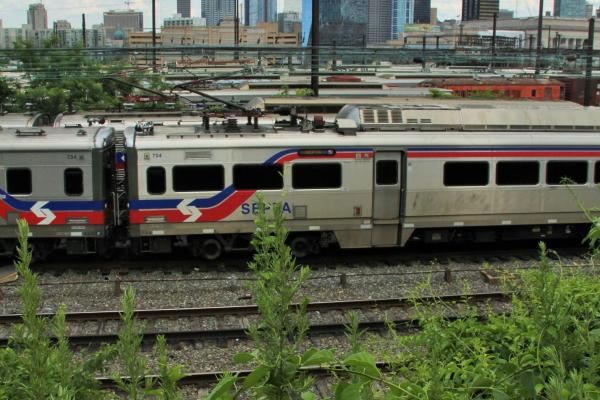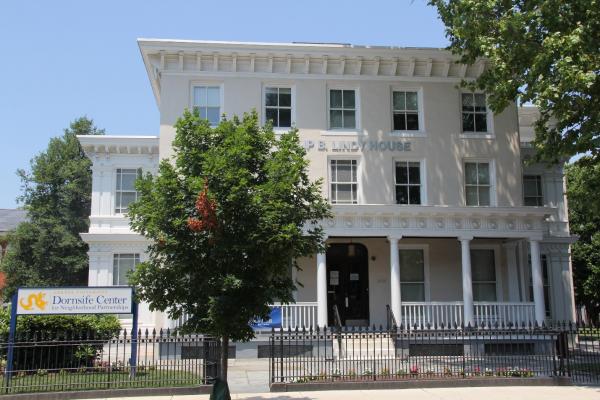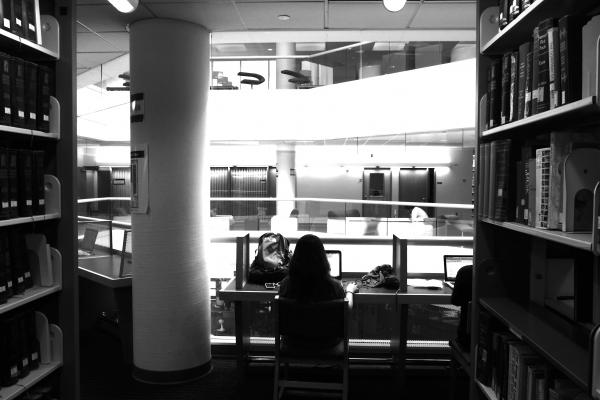Commercial Building Boom
Part of
In the 2010s Drexel launched a building boom of mixed-use commercial developments along Chestnut Street and on streets that intersected with the campus.
In the 2010s, Drexel University, in partnership with private developers, began a boom of construction projects, mainly mixed-use commercial buildings developed in partnership with private developers and involving land-lease and management contracts. Spanning the 3200 block of Chestnut Street, Chestnut Square featured two eight-story buildings that flanked the Creese Student Center, with upscale restaurants and retail businesses operating at street level. The Summit, a spectacular residential tower opened on Lancaster Avenue at Drexel in 2015, and an innovative hotel–restaurant building, the Study, opened on Chestnut Street in 2017. Opened in the spring of 2017 on the high ridge of Drexel’s eastern boundary was the mixed-use, 16-story Vue32 tower. The revenue for these commercial projects is heavily dependent on students.
Under President John Fry, Drexel began construction of several mixed-use developments combining residential units, restaurants, and retail operations. The most notable are Chestnut Square, the Summit, the Study, and Vue32.
With Fry’s leadership, Drexel transformed the face of Chestnut Street with the creation of Chestnut Square. Situated between 32nd and 33rd Streets, Chestnut Square, a “$97.6 million mixed-use development” was planned as “a new gateway for Drexel and University City.” It was a joint initiative between Drexel and American Campus Communities, a manager and builder of high-end student housing projects. Completed in 2013, two eight-story buildings “front Chestnut Street while maintaining an open entry corridor to the adjacent Creese Student Center.” A 19-story residential tower anchors the corner of 32nd and Chestnut. Restaurants and retail outlets occupy the two-story street-level space of these buildings; the upper floors are high-end student apartments.[1]
A second construction project with American Campus Communities was the 25-story, $270 million residence hall the Summit, a massive, mixed-use development at 34th Street and Lancaster Avenue, which opened in the fall of 2015.[2] Another commercial coup for Fry’s administration was the 10-story “boutique hotel” the Study, which opened on the corner of 33rd and Chestnut Streets in the winter of 2017. It was developed through a land-lease arrangement between Drexel and Hospitality 3, a hotel and real estate development company.[3]
Another highly visible construction project in the Fry administration’s portfolio was the mixed-use, 16-story Vue32 tower, developed jointly with the Radnor Property Group. Located on the high ridge of Drexel’s eastern boundary overlooking the Amtrak–SEPTA railyards, Vue32 affords dramatic views of Center City. In addition to the usual high-end amenities offered by University City’s myriad “luxury” apartment complexes, the facility uniquely includes a privately managed preschool. The building opened to occupants in July 2017.[4]
All four of these mixed-use developments are heavily dependent on students for their revenues. As reported in 2017, Drexel, a 92-acre campus, counted more than 24,000 students enrolled in its undergraduate, graduate, and professional programs. Fry and his leadership team are betting—and the odds appear to be in their favor—that previous Drexel president Constantine Papadakis’ slogan, “co-op, urban location, and technology” will continue to accelerate Drexel’s growth up to and beyond 2041. Drexel’s future is now intertwined commercially with the futures of Penn and the University City Science Center. These anchor institutions collectively form a two-mile-long phalanx on the west bank of the Schuylkill. Quite simply, a commercial success for one redounds to the benefit of the others.



